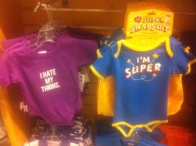I have always been extremely selective when picking a movie to watch. I think I spend more time reading reviews of a movie more than I spend time actually watching the movie itself because it takes me a great load of effort to pay attention to something for two hours straight, therefore I feel the need to research and make sure that whatever I’m watching is going to be worth my time (not like I’m actually using my time wisely otherwise or anything). But anyway, as much as I highly dislike watching movies, I think that the whole concept of creating a motion picture art piece is beautiful and I myself love creating or participating in a production. Therefore I decided to do a movie-related project for Media Studies Final project: I spent almost two weeks watching several independent films, looking at how these so called “progressive movies” portray themes like: Age, race, gender and social class, as well as how they portray “love and relationship”.
Independant films, or indie films, are movies that are produced outside of big commercial movie studios and are made by independent movie producer. These movies are often low-budget, have distinctive style and are sometimes called “art movies” because of the way they are filmed and their contents. Some examples for “indie movies” are Wristcutters: A love story, Submarine, Amelie, Pulp Fiction, etc. Many people are unfamiliar with the producers, the directors, the actors and even the movie itself – that’s basically indie movies. Indie movies are also often considered to be “countercultural” and they are expected to provide a deeper, fresher and more different view into certain topics. Some might think they are great, some might think they don’t make sense at all.
For my project, I watched: Juno, 500 days of Summer, Perks of being a wallflower, It’s kind of a funny story, and Three colours: Blue. Since these are classic independent films, I was expecting to see “age-race-gender-social class-love” being represented differently from “commercial movies”. But it turns out, these so called “indie movies” are not that distinctive when it comes to those topics.
Age
Stereotypes on different age groups is still a thing in these movies. Three out of five movies I watched were young adult movies, and the teenagers in these movies are often put into groups: the rebel, the nerd, the jock, etc.
Race
People of colour are deeply underrepresented. All the main characters are white. Even when there is a character that isn’t white, his or her role wouldn’t be that significant at all. People of colour are often used as a background for the white main characters, which is disturbing.
Social class
In these movies, according to how the characters act, the way they live, etc., we could assume that they are either from the upper-middle class or upperclass.
Gender
Even though independent movies are suppose to be more progressive when it comes to things like “gender”, many of them aren’t. Female characters are still the weak, dependent ones whose role is to be loved and protected by men, to be emotional and to wait around for someone to save them instead of saving themselves; while the male characters still have to be the powerful, dominant and independent ones. Thinking about sexism in movies remind me of the Bechdel test. In order to pass this test, a movie must have at least two named female characters, these female characters have to talk to each other at least once and the topic of the conversation must be something besides men. According to those rules, all of the movies I watched for this project failed.
Love
My main focus for my final project, however, is something we mentioned in class but didn’t talk about that much: love and how it’s depicted in media.
Even though the way love is represented in these movies is a little more organic than many commercial movies, it is still somewhat unrealistic, setting up some strange expectations for their audience. Love – in movies – is romantic dinner where your partner would show up in front of your door with roses and take you to a fancy restaurant where you both eat under the candle lights. Love – in movies – is running to a building rooftop and kissing in front of the sunset. Love – in movies – is cuddling in front of the bonfire by the beach, contemplating life together. According to movies, love is easy and effortless, love is smooth and dreamy: two people will automatically falls for each other at the same time without anything in the way.
The thing with our mind is that: after a while of being told certain things, no matter how much we want to not believe so, we would eventually ended up believing in whatever we were told. After watching a few love movies, even though we know so well that not everything in media is illustrated correctly, our standard for “love” would naturally be raised. We expect the same things we see on movies to happen to us: we expect amorous dates, we expect glamorous proposals, we expect everything that was scripted, filmed and edited in a studio to happen to us. Media makes us think that every single second in a relationship have to be absolutely exciting. Media makes us think that relationship (or love, in general) is an “out of this world” experience and it leaves out all the not so sexy aspects of love. “We assume others show love the same way we do—and if they don’t, we worry it’s not there.” We raised our expectations for love up so high that when it doesn’t look the same way in reality, we assume that it isn’t there. Maybe that’s why we are way too often disappointed in real life. Nowadays, when many of us are swallowed by the media, we are forced to see “love” through a magnified and beautified lens, and we as a species are not very good at filtering information. We are told to hold on to an unhappy relationship because “it will be worth it in the end”. We are told that relationships are just nights staying up cuddling, talking about how the universe works and how our partner’s eyes look like they’re made of sunbeams. We are told that love is easy and poetic, when in reality, it requires work and effort. We are told so many things that fail when we try to apply them into reality. Maybe that’s why we are disappointed. Don’t get me wrong. I believe all of those amorous activities actually happen in many real love stories. They are part of love, but media makes it seems like they are love.
Back to all the movies I watched. When the majority of the characters in these supposedly “revolutionary” movies are white upperclassmen, what message are they sending to the audience? Who, in fact, is their audience? What makes a movie “independent” is the fact that it sends out a divergent message and providing a different view on a topic; but when 90% of these “indie movies”, these “art movies” I watched (during this project and also before this project) often conform to whatever we already have in the media, what in fact is the message? Looking at how media shape “love/romance”makes me wonder: If indie movies were supposed to be countercultural, what are these so called “indie movies” communicating to the audience? Are they doing a great job of going against the romanticized version of romance in many movies and reflect truthfully on the real beauty of real relationships? Maybe, maybe not. What about you? What do you think about love? Are you feeling what you’re feeling because you’re feeling it or are you feeling what you’re feeling because others are telling you to?






